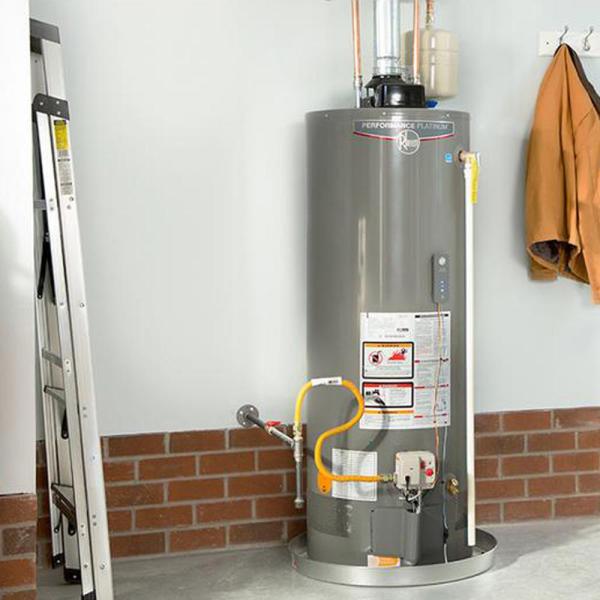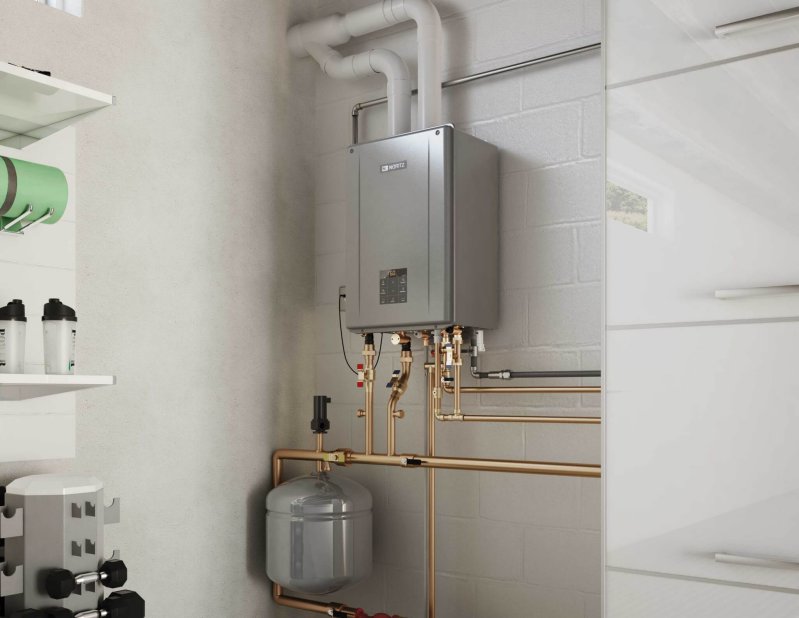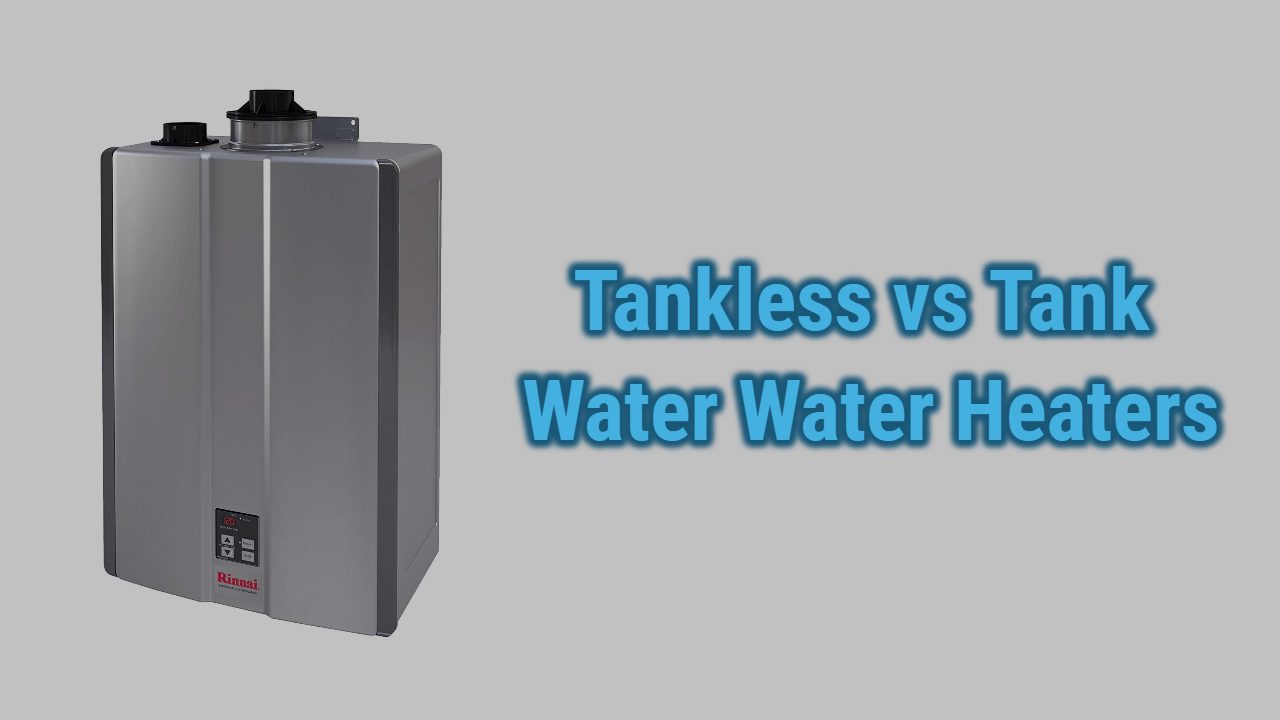The houses which stood for more than 50 to 60 years and are still standing will have a tanked or conventional type water heater. In a large tank, the water is heated, the process of heating is continuous, which utilizes fuel even when the hot water is not required.
If you find yourself splashed with the cold water in a continuous flow of hot water more than few times, then your water heater is out of its depth. It needs a replacement. There are two types of water heaters available in the market from which you can choose; the tank water heaters, which are prevalent for hundreds of years now, and there are new tankless water heaters.
For a conventional water heater, a large tank is used to store the water. While for tankless water heaters there is no requirement of storage, it heats the water as and when it is needed. Tankless water heaters save your bill and can be stored anywhere, and they are available in the smallest sizes.
We have gathered all the information that you are going to need for a thorough understanding and the difference between the tank type and tankless water heaters.
Table of Contents
Tank Water Heaters

A tank water heaters are the devices that are bulkier and bigger; I mean really big. The size of units will vary, but the most common size is 40 gallons to 80 gallons, based on the hot water you need. The most regular water heater you will see is with the 50 gallons tank.
These water heaters can use either natural gas or electricity to heat the water. The water is stored in the tank; with the help of a heating element, it transfers the heat to the water. If the heater works on electricity, then heating is performed using two elements, one at the top and one on the bottom.
Whereas, for natural gas, there will only be one burner at the bottom. Moreover, when all the water from the tank gets depleted, you will have to wait for it to replenish it with the new hot water.
Even though electric heaters have two elements still, it is slower than natural gas heaters. The major flaw with the tank water heater is its energy consumption. You see, even if you are not utilizing any hot water, then also the fuel or the electricity will be used to keep the water at the set temperature.
Furthermore, the water tank is not a small thing. A typical tank can be five feet tall and two feet wide, and these dimensions increase with the water capacity. If you have a basement to store it, then the size may not be much of a problem for you. But the problem arises for the homeowners who don’t have a basement, and they may need to fit it into the closet. That is a really close fit.
Another important thing is that the newer units with the same water capacity will be bigger than the older units since the new regulations require them to be more energy-efficient, and that’s why they will have more insulation.
Tankless Water Heaters

As you can see from the name, the tank is not a part of this kind of heating system. Rather they do the heating on demand when the hot water tap is turned on. That’s why they are also known as On-demand water heaters.
Whenever the hot water tap is turned on, the water flows through a pipe into the system. As a fuel, they use natural gas or electricity. When the water flows through the pipes in the system, the water is heated with the energy released from the burning of a fuel. As long as you have water in your pipes, the tankless water heater can supply continuous hot water and that too instantaneously.
As there is no water stored, it doesn’t need to be kept at a certain temperature all the time, and this means the standby heat losses you see in the tank water heaters are eliminated here.
These water heater’s hot water supply isn’t limited by the tank size, but that is limited by their flow rate. If you have a large house, then it may not supply enough water for simultaneous use. The general flow rate ranges from 3 to 5 gallons per minute. Also, an electric heater will have a lower flow rate than the one which burns gas. The solution for that is the employment of two or more water heaters.
The main advantage of them over gas-powered ones is their size. They are small, actually much smaller than the tank water heaters. The common size for them is 2 fit in height and 1 foot wide. That can easily be fitted anywhere. They can even be hanged on your walls.
Energy Efficiency
Water heaters are going to contribute much to your annual energy bill. So it is important to know their energy consumption and also their efficiency.

Tank Water Heater
To keep the water at a certain temperature range, a tank water heater will keep utilizing energy, even though the water is not used at all. The energy is wasted here; this heat loss is known as a standby loss. This wasted energy increases the energy bill.
The standby loss is highly minimized in new models in the market because of their better insulation, which isn’t that great in older tank water heaters. If you want to take the heat loss in control, then the simple and inexpensive solution is the use of an insulation blanket. A blanket that is made from aluminum or fiberglass helps to keep the heat inside.
The energy efficiency of a Heater is measured in terms of energy factor. As the energy factor increases, the efficiency increases; a high energy factor means high efficiency. Heaters that are most efficient will have an energy factor ranging from 0.67 to 0.70. Besides, if the heater proves to be highly efficient, then it is awarded the energy star.
If you want to keep the energy cost as low as possible, the size of a heater plays a critical role, a small heater will deplete fast, and new cold water will consume more energy. And if the size is bigger than needed, the energy will be used to keep that large amount heated at a required temperature.
Moreover, as compared to electricity, the gas-fired heaters are more energy efficient.
Tankless Water Heater
Tankless water heaters nowadays are the first choice of most homeowners, and this is because they are more energy-efficient than their counterparts with the tank. The standby losses of tank water heaters are efficiently eliminated here, and this is the result of its ability to heat the water as and when required.
As these water heaters only turn on when required, the energy consumption is very less. But for units with the pilot light, the energy use may even reach the consumption of tank heaters. This is because the consumption light will always be on, but this is not the case with all the tanked water heaters.
Most of the latest models come with the intermittent ignition device. It is becoming the regular ignition method in tankless units, and they don’t always stay on. Besides, if you have the pilot light, then no worries, it can be easily turned off. The energy consumption of pilot light will vary for different models.
According to a general estimate, if you use a tankless water heater for the daily water needs of around 40 gallons, it will be 24 to 34% more efficient compared to if the tank unit is used. But when the water needs to increase more than 80 gallons, then the efficiency decreases.
The thing is, the operating cost for the electrical unit will be more than the gas units, and this is because natural gas costs less compared to electricity. But note that the efficiency of electric heaters is more and not of a gas water heater.
Tankless water heaters are efficient, but if you have heavy water needs and need water simultaneously, then one unit might not be enough. For that, you can use two or more units, and this is due to their limited flow rate. As the number of units increases, their operating cost will also increase, so keep that in mind.
How They Differ In Terms Of Installation?

If we talk about the tank water heaters then, the installation is pretty easy. Even, you can do it yourself, no need to consult a plumber because it just requires a few connections of pipes here and there. That is a simple task, that is so only if you are installing the same type of water heater.
But, when transitioning from a gas water heater to one that works on electricity, it can turn into a complex process, and you might need a little help from a plumber. An installation of gas-type tank water heaters will require proper exhaust vents, and also supply from a gas line needs to be drawn up to the unit, and this should be tackled in the right manner.
On the other hand, for tankless water heaters, their installation process is somewhat complicated, not straightforward, such as with tank units. If you are upgrading from the tank to tankless units, then you will certainly need to hire a plumber or electrician, and that too certified one for the installation to keep the warranty of the unit intact. That’s not it; some companies will require the installation only by factory-trained professionals. If not, then you can bid your farewell to the warranty.
For gas models, you will have to do some more plumbing work and change some pipes here and there because they require large fitting vents. While electric models need high electric power to work properly and they can range up to 160 amps. So, if you don’t have that, then a high power supply upgrade is in order. The electric supply upgrade you require will be 200 amps or more.
How They Differ In Terms Of Maintenance?

If you want your water heater to run for years without a decrease in its efficiency, then its periodic maintenance is very crucial.
Tankless water heaters don’t have a storage tank, so there won’t be a mineral build-up as it happens in the gas units. But still, there is a possibility it means it will require less frequent maintenance, but you will still have to do it.
To clean a tankless system, you can use white vinegar or a particular cleaning solution. Also, use a diluted version of white vinegar. You can perform the flushing with the use of a few buckets of water and a pump with a hose, but if you want to make it simpler, you can use the specific kits available in the market. It will have all the things needed to perform the flushing.
The hardness of the available water will decide the flushing frequency, and if the water is hard, you will need to perform the flushing every six months or so. Otherwise, once a year is good to keep it working properly. If the unit malfunction or some part is damaged, then fixing is easy because most of the parts will be readily available in the market.
Tankless water heaters offer a longer lifespan than tank water heaters, and tank water heaters can last up to 10 to 15 years if properly maintained, while tankless water heaters will be there even after 20 years of service.
The most important part of a tank water heater is its anode rod, and it keeps the heater safe from rusting. It should be checked every 3 to 4 years to see if it is working properly. You will find it on the top of the heater, and it is a steel core wire which is wound with aluminum, zinc, or magnesium wire.
Same as the tankless water heater, the tank here will need to be flushed once a year. This is because there will be a build of sediment and scales at the bottom of the tank, which decreases the lifespan of the unit. Moreover, you can inspect the temperature and pressure valve to see if they are properly working.
These are some general instructions to increase the lifespan of your heating unit, but for specific cleaning and maintenance guidelines, you can refer to the owner’s manual.
Initial Investment
The initial investment will be more for the tankless water heater than the tank water heater.
A tank water heater doesn’t cost as much as a tank water heater does. You can have a decent tank water heater installed for under $1000. While a tankless water heater may cost a thousand or more dollars only on the unit itself, the installation costs can then be added to it.
Also note, the purchasing price will vary based on the company and model specifications. The installation cost won’t be much for the tank water heaters, and it will just need to be installed on the existing unit. But for the tankless system, the cost will increase if you need a piping and electrical supply upgrade.
Conclusion
A tankless water heater and tank water heater differ from each other on many fronts. They both have certain advantages and disadvantages over each other. Tankless water heaters might be a good fit for one homeowner, while it may not be for some other.
So, before making a purchase consider a range of relative factors associated with both of them. For example, cost, efficiency, lifetime, and hot water supply can be considered to make a choice. At last, it all comes down to your circumstances.
